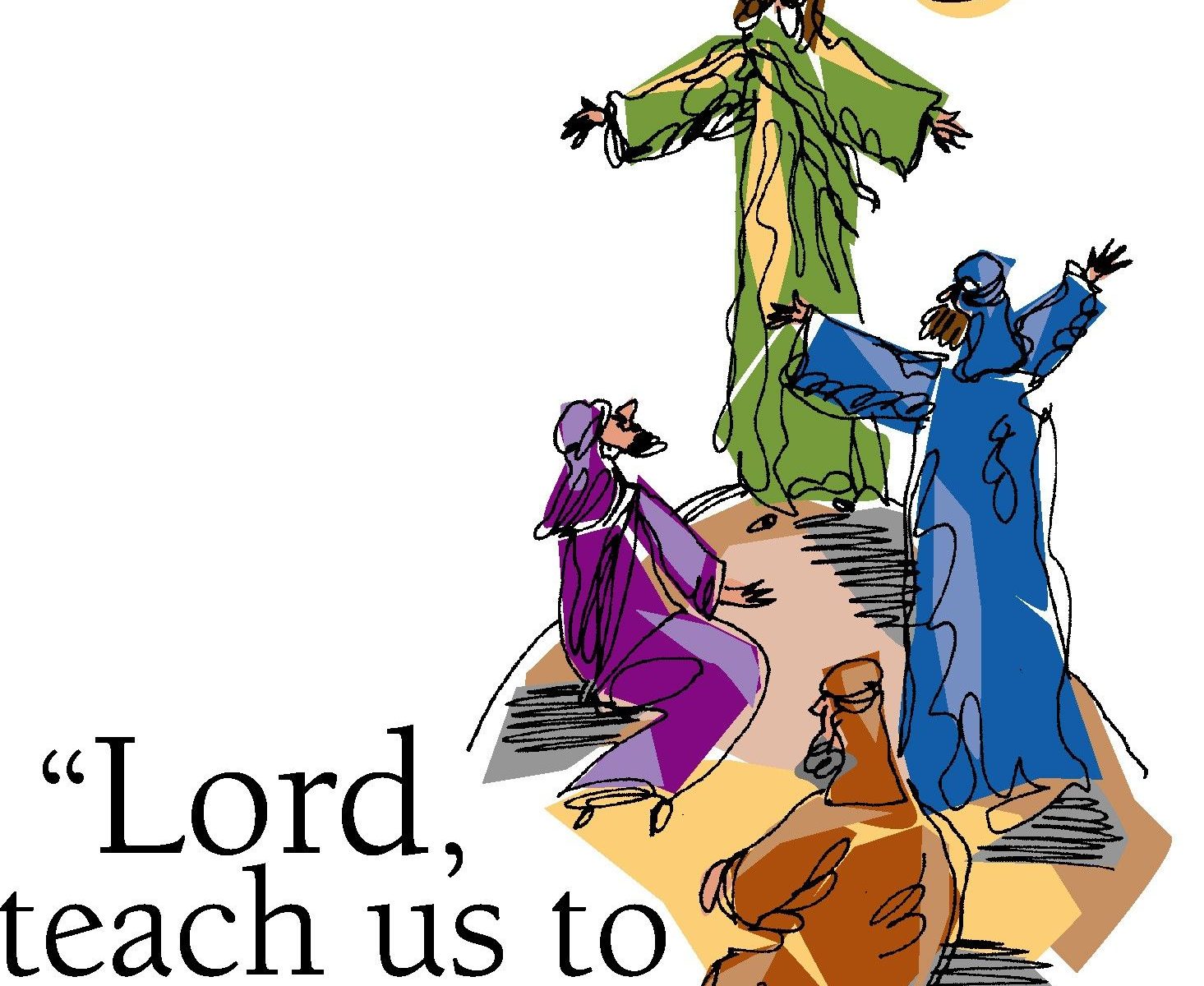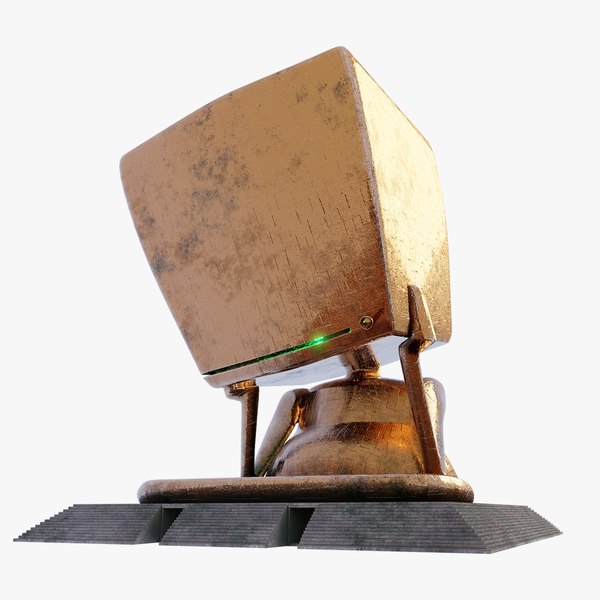Why Do We Pray the Long Ending of the Lord’s Prayer? Because it Belongs to the Great Tradition of Faith
Wait, what? What is the long ending of the Lord’s Prayer?
To clear things up right now, the long ending refers to this line: “For thine is the kingdom, and the power, and the glory, forever. Amen.”
So, what’s the issue?
Observant readers will note that in most modern English Bibles, this line is put in a footnote, not in the text. Is it an original part of the Bible? Why do we pray it?
Here’s the short answer
It’s probably not part of the Bible.
Based on best methods and explanations of the ancient manuscripts we have, this line was not part of the original prayer. It is absent in many of the earliest and best manuscripts as well as the earliest commentaries on the Lord’s Prayer from key early church leaders. Not to mention that there are a few different versions of this long ending scattered in different places.
Why do we pray it?
Because the church has prayed it this way for about as long as we can look back into time.
This ending likely made it into the Gospel manuscripts via using the prayer in church services. It brings a nice, theologically profound, closure to the prayer. As we pray for God’s kingdom to come, as we ask for God to meet our daily needs, we wrap those prayers up in words reminiscent of what the angels proclaim in the heavenlies: Holy, Holy, Holy, is the Lord God Almighty; the whole earth is filled with his glory.
So, we continue to pray this longer ending as part of the people of God stretching across the centuries longing for the kingdom, the power, and the glory of God to be established in all things.
If your appetite is whetted, find some more answer over here
Here’s a decent place to get a longer answer informed by some basic discussion of the textual tradition and the practices of the church emerging in the Reformation Era: Why Do We Say the Long Ending of the Lord’s Prayer?
“How Can I Pray Faithfully? Grasp the Genius of the Lord’s Prayer” – October 13, 2024 Church Service
“Get Off the Prayer Merry-Go-Round by Refocusing On God” October 6, 2024 Church Service
AI Answers the Question, “How Does God Deal with All Those Prayers?”
How can God possibly hear and answer all those prayer requests? It’s a mind-boggling prospect that one person can interact with so many prayers in an intelligent way. How is that possible, even for God? That’s a question people have wrestled with for ages.
A Bruce Almighty prayer machine
This question is the premise for an extended gag sequence in the Jim Carrey movie Bruce Almighty. Like many Jim Carrey movies, it’s funny, and really weird, and in this case much more sacrilegious than most. Bruce, Jim Carrey’s character, receives the powers of God. As he’s walking down the street, he starts hearing peoples’ hopes, dreams, and prayer requests. This happens all the time, and it is overwhelming to have to deal with. So, he sets up an email system to handle the millions and billions of requests. But that is too hard, too. To avoid having to deal with them, he just answers “yes,” to all. Chaos ensues.
The gag is premised on the simple idea that God is more powerful than a person, but still finds it overwhelming to have to carry on so many relationships and field so many requests (often contradictory) at the same time.
But we have a different way to picture it, now.

The power of AI helps us picture the power of God
Large Language Model AI, like Chat GPT, have upset the status quo in many ways.
Here’s a good way.
The existence of these AI tools that seem to be able to answer most any question in the blink of an eye—all around the world—gives us a conceptual tool to make a little bit more sense of how God deals with prayers. We made this machine. It is subject to the limits of human power and engineering, and yet it’s power is mind-boggling incredible.
How much more than this AI can the God who created the universe and created us carry on a relationship with everyone all at once and never be overwhelmed. Never be taxed. Never be worked too hard by it.
That’s what God can do.
That’s what God does with our prayers.
Some patterns for prayer
So, you’re excited about off the cuff prayer and scripted prayer, but how to get going? Here are a few proven helps in prayer to try out, both scripted prayers, and some model prayers to guide your praying well.
Some scripted prayer
First, as with most areas of knowledge, the internet has opened up immense archives of scripted prayers to peruse. Probably too many. I’ll point you to two that I have used with profit:
- A little book called The Valley of Vision (ask me about it, if you would like to check it out)
- The prayers of the Daily Office in The Book of Common Prayer (this link will take you to the prayers and readings for each day, called “The Daily Office”). Check out an app which brings it right to your phone: Daily Prayer.
These are both helpful sources of model prayers. I’m sure there are tons more out there, but I know these are good.
Scripted prayers can be helpful in expanding your understanding of what to pray for or how to pray. Let’s turn our attention now to prayer models which allow you to take advantage of the strengths of both off the cuff and scripted prayer.
On using prayer models
There’s a saying in academia that goes like this, “All models are wrong; some models are useful.” The saying refers to models like what weather forecasters use. They are tools we use to make sense of complicated data or experiences. While we like to roast weather forecasters, the reality is that we often rely a great deal on the ability of weather models to predict likely weather outcomes. I make my plans for tomorrow based on the weather forecast given today. And they do a pretty good job much of the time. We use them because they are useful. Not because they are perfect.
Model prayers have a similar function. The three model prayers I will share in brief provide a way to guide prayer time. To keep it focused. To direct our priorities in prayer to places that we can often overlook. Model prayer are a pattern to follow much like signs along a hiking trail—they keep you moving along in the right direction.
Here are three patterns to follow: the Lord’s Prayer, ACTS, and the praying hand.
the Lord’s Prayer
When Jesus’ disciples asked him how to pray, his response was a prayer. We call that prayer “The Lord’s Prayer” today. It can be found in Matthew 6:9-13 (the most famous version) or Luke 11:2-4 (the less famous but still good version). Prayer practices in Jesus’ day often involved repeating set prayers. That was very likely what the disciples were asking Jesus about: what is the set prayer your followers should pray? As such, we do well to still repeat this prayer today.
But the prayer also works as a framework. We can organize our own approach to God around the key themes which Jesus included in the model prayer he gives his followers.
Take each of the sections of the Lord’s Prayer to guide areas of life that require focus in prayer:
- Dear Father, you are _____
- Your kingdom come, your will be done in _____
- Give us _____
- Forgive us for _____
- and help us to forgive _____
- Protect us from temptation and evil in _____
It doesn’t cover everything worth praying for, but it guides our thoughts and feelings through an organized set of priorities worthy of prayer.
ACTS
Another well-known pattern prayer, the acronym ACTS, leads through key parts of our spiritual life before God:
- Adoration (spend time worshiping God) – Wow God, you are…
- Confession (repent of sins and ask for forgiveness) – I’m sorry for…
- Thanksgiving (thank God for what He has done) – Thank you for…
- Supplication (asking for help) – Please help…
This pattern is especially helpful in reminding you to spend time adoring/praising God and confessing sins, not just saying, “Here is what I want to happen.”
the praying hand
The praying hand, our final model, is one that I only learned about recently. But I have come to find in it a dear friend. Use your fingers to remind you of key areas that deserve prayer:
- Thumb: pray for those who are closest to you (the thumb is closest)
- Index/pointer: pray for those who teach and heal you (this finger is used for teaching)
- Middle: Pray for those who lead (this finger is tallest)
- Ring: Pray for those who are weak/sick (this finger is the weakest)
- Pinky: Pray for your own needs
A particular strength of this pattern is that it combats self-only focused prayers. We work through the needs of others in prayer before getting to our own. That is a beautiful practice of loving neighbor as self.
Follow the pattern prayers
Models work because they are simple, memorable, and effective. These three model prayers (there are many more) fit the bill. Use them well.
How, then, shall we pray?
Few questions have the power to make a church gathering awkward more quickly than asking people about their prayer life. Yet it is a deeply important part of life for the follower of Jesus. A new year is a fair time to ask an ever-important question: how, then, shall we pray? There are two approaches to prayer that you should utilize which can yield benefits in your prayer life (and life in general): off the cuff prayer and scripted prayer.
“Off the cuff” prayer
Off the cuff prayer, or more fancily, extemporaneous prayer, is what we call a prayer that is made up on the spot. In my experience, people in the Baptist and Baptist-like circles of Christian practice consider extemporaneous prayer to be the gold standard. Off the cuff prayer has a unique power to unleash passion, but without proper attention it also can easily end in dull routine and limited prayers.
raw and passionate prayer
Probably the best feature of extemporaneous prayer is that it connects to the actual thoughts and feelings of the moment. Since it is much like talking, it allows us to freely bring our thoughts and concerns to the throne of God, with all the angst and joy we feel right now. This conversational aspect of off the cuff prayer often results in it feeling more real, more authentic, and more connected to our lives. All good things.
the problem of routine and blinders
But for all its strengths, extemporaneous prayer has some weakness to guard against. Two important weaknesses are dull routine and prayer-blinders.
dull routine
A prayer routine is when you end up saying the same old things about the same old things. Wash. Rinse. Repeat.
Nothing saps the savor from prayer quite like a dull routine. Off the cuff prayer can easily degrade from connected conversation to stale patterns and cliches. Let’s face it, the depth and breadth of extemporaneous prayer is largely limited by your creativity. While we have periodic flashes of creative brilliance, most of life is spent in the humdrum murk of the mundane. Stagnant prayers tend to result in a stagnant prayer life.
Alongside the danger of the dreaded dull routine, off-the-cuff prayer can also be crippled by prayer-blinders.
prayer-blinders
Envision the Mackinaw Island horses. They all wear the same, stylish headgear: blinders. Blinders serve to narrow the horses’ immense range of vision, so they can only focus on what is ahead. For horses pulling wagons in busy streets, blinders are useful. But for the follower of God in prayer, blinders hinder spiritual depth and breadth.

Prayer driven only by the needs and thoughts of the moment tends toward spiritual narrowness. It is relatively easy to pray for my needs; after all, I am always acutely aware of them. But what about the needs of others in your church? The one struggling with the recent death of a loved one or the couple at a loss in parenting their child, and so many others. They are on the periphery of your life. Without some sort of guidance you probably won’t get around to praying for them. Not to mention even further removed issues like church unity, gospel effectiveness, the spiritual health of denominational leaders, the effectiveness of community leaders, or even the perseverance of the church around the world.
All these topics, and more, deserve prayer. But when our prayers are blown about by our daily concerns, they tend to never arrive anywhere but where the wind blows.
Scripted or rote prayer.
Opposite to off the cuff prayer, the other main model involves praying from a script. Scripted prayer, aka rote prayer, is praying via reading or reciting from memory. Think reciting the Lord’s Prayer. Scripted prayers can be either self-written or composed by others. Periodically using prayers written by others can sharpen the way you pray and broaden your awareness of what is worth praying for. This makes scripted prayers useful for learning how to pray. Scripted prayer, though, also suffers from the pitfall of a different sort of dull routine.
deep and wide prayer
Scripted prayer is like marinated meat. The longer it soaks, the more flavorful the result. Off the cuff prayer is limited by the creative spark of the moment. Scripted prayer soaks in the flavors of reflective thought. As such, scripted prayers—at least those done well—tend to have greater breadth and depth of concern, rigor, and beauty. A prayer that has time to soak gains the strength to move beyond immediate, personal needs and embrace God’s words and intentions to us.
lasting prayer
Since it is written down or memorized, scripted prayer gains a further strength: repeatability. While many from non-liturgical church backgrounds fear repetition, the fact is that those things which we repeat shape us. Skill and expertise emerge through practice over time. Scripted prayers can shape our lives and shape our prayer sensibilities in powerful ways over the years.
the pitfall of dull routine
Dull routine is the chief drawback of scripted prayers. While repetition shapes our lives, it can also become background noise. How often do we go through the routine of taking a step without giving any conscious attention to what we are doing? A prayer life that is reduced to sub-conscious prayer is a tragedy.
Aside from monotonous repetition, scripted prayers can also become stale when they fail to excite the emotions. Prayers that feel foreign in your mouth don’t taste good, thus they are never savored. Remember your favorite B movie. One quality of B movies, aside from poorly written scripts and deeply underfunded effects, is that the actors sound like they are saying lines. The words don’t quite fit in their mouths. Praying foreign prayers is not helpful.
The best of both worlds
How then shall we pray? I hope it is clear that both off the cuff and scripted prayers are valuable. Scripted prayer tends to be strong in all the ways that off the cuff prayer is weak, and weak in all the ways that off the cuff prayer is strong. As such, there is great wisdom in incorporating both into a life of prayer. The two approaches can feed into one another in lovely ways as you build a more robust prayer life.
In the next post, I’ll give a few patterns that are worthwhile guides for praying.
Photo by Chris Liverani on Unsplash
Adversaries and anger
In Psalm 79 and 109 we see the psalmist crying out in anger against adversaries. Parts of each of these psalms sound pretty harsh. But they do address an important part of life: the reality of adversaries. We all have adversaries of some sort at points in our lives. The book of Psalms, wonderful for so many reasons, gives us guidance on how our hearts should move towards God and others when we are angry because of difficult people and difficult situations in life.
Responding to adversaries in difficulty
Adversaries come in many shapes and sizes. We can consider people bringing difficulties into life as “adversaries.” Maybe, like the psalmists, your adversaries are people scheming about how to kill you. More likely, they are people plotting your downfall at work, a family member who always manages to create chaos whenever they show up, a class bully, or a medical provider who doesn’t take you seriously. The list of possible adversaries is nearly endless. They all share in common the ability to elicit anger as they bring difficulties into life.
There are many ways we can respond to difficult people and difficult situations in life. Here are four ways we can respond to adversaries and the anger they inspire in life: (1) dreaming, (2) scheming, (3) bearing, and (4) moving.
dreaming
By dreaming I mean the sort of wishful hoping for the downfall of your adversary. Maybe you silently wish your coworker would get fired; or that your obnoxious neighbor will get caught violating the city rules and be forced to change their ways. Whatever it be, dreaming involves a sort of curse: “I hope you choke.”
scheming
If dreaming is wishing for the downfall of your adversary, scheming takes it one step further. Here you are actively planning how to bring about the shame and/or downfall of those who have hurt you.
Scheming may take the form of passing around juicy stories—whether true or false—with the aim of exposing your adversary to ridicule. Or, in a more extreme form, scheming can involve creating traps that directly threaten the life and well-being of an adversary: political, financial, relational.
Scheming can feel good because it is taking initiative and using our power to fix the situation.
bearing
Often, the adversaries of our lives will pass by, if we are content to wait for a time. And if you are prone towards stubbornness, waiting emerges as an obvious approach to conflict. Bearing allows you to deal with your adversaries by not dealing with them. You may bear with your adversaries and the anger and frustration they bring into life because you are strong and can take it; you may bear with them because you feel like you deserve the difficulties they bring into your life. Whatever the reason, bearing concludes that it is better to put up with injustice than to try to do anything about it.
moving
Another possible response to adversaries is to move. That is, moving towards God. Moving involves turning toward God in prayer about our adversaries, driven by the anger and frustration they cause within us. This is, I submit, the basic posture which Psalm 79 and 109 recommend in dealing with adversaries. Moving toward God in prayer while angry is an exercise in expressing ourselves towards God rather than towards our neighbor.
Responding by moving toward God in prayer differs in a couple key ways from the other responses above. It acknowledges that God is ultimately in charge of justice, it acknowledges that my resources for dealing with difficulties and difficult people are very limited, and it also acknowledges that anger is not a wrong part of how we function. Anger should drive us toward God, who is big enough to hear our anger, strong enough to bear it, and wise enough to patiently redirect our anger where it should be, rather than leave it in the misplaced directions we so often vent our anger in.
Conclusion
Life is full of adversaries. Most are small and passing; some are big and lasting. People and situations in life lead us again and again into anger by bringing difficulties and frustrations into life. The question is not, “Will you get angry?” but rather, “How will your anger play out?”
As adversity moves into your life, where does anger lead you? If it does not lead you to God in prayer, than your anger will certainly emerge as a force of destruction to you and to others. The Psalms guide us not only in how to praise God, but in how to respond in our anger towards adversaries in our lives: by moving towards God in prayer.
Photo by Alexandra Mirgheș on Unsplash




